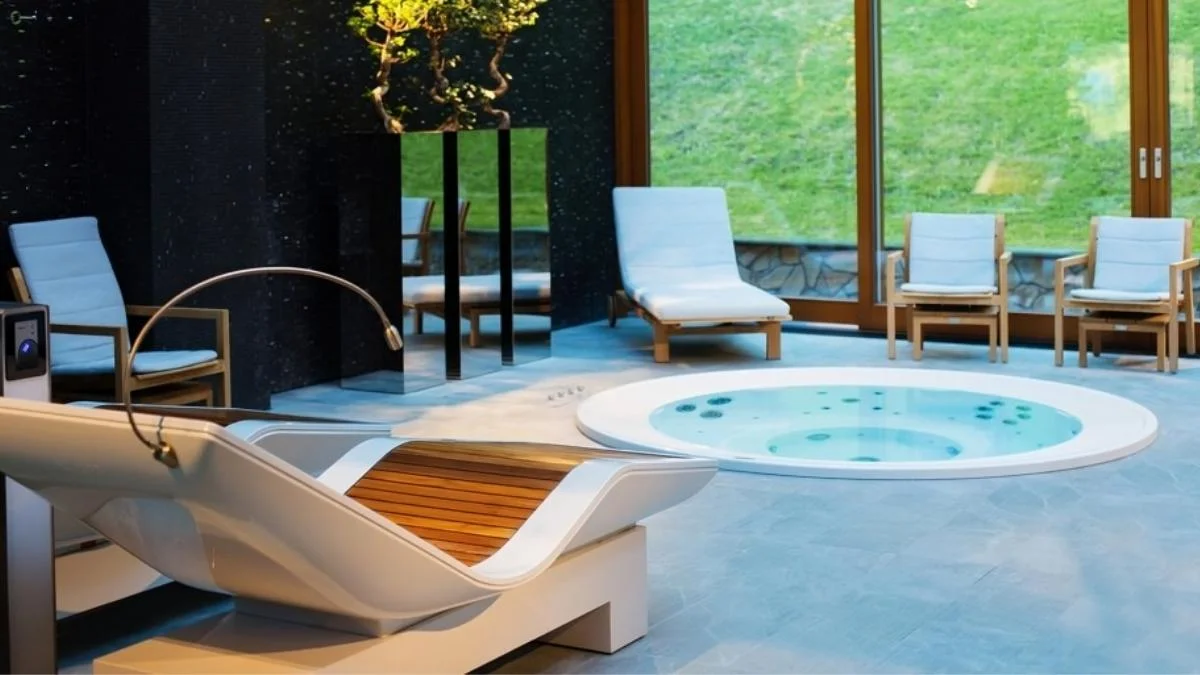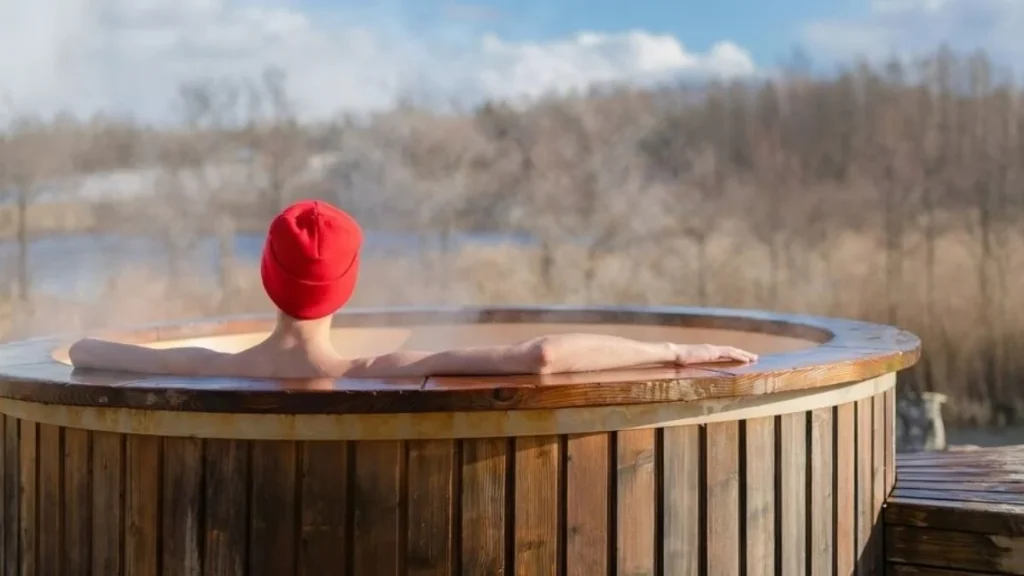YOGA
The Ultimate Guide to Choosing the Perfect Hot Tub for Your Home

A hot tub is more than just a luxury—it’s a personal retreat that offers relaxation, therapeutic benefits, and even a space for socializing. Whether you’re looking to unwind after a long day, improve your health through hydrotherapy, or create a backyard oasis, selecting the right hot tub is a crucial decision.
With various models, features, and installation options available, it’s essential to consider factors such as size, materials, maintenance requirements, and budget before making a purchase. This guide explores everything homeowners need to know to choose the perfect hot tub for their lifestyle and space.
Table of Contents
1. Determining the Right Size and Capacity
The first step in selecting a hot tub is deciding how many people will use it regularly. Hot tubs come in various sizes, ranging from small two-person models to larger units designed for six or more people.

Factors to Consider When Choosing Size:
- Personal Use vs. Entertaining: A compact model may be ideal for individuals or couples, while a larger hot tub is better for hosting family and friends.
- Available Space: Consider the size of your deck, patio, or backyard to ensure a proper fit.
- Seating Layout: Some hot tubs have lounge-style seating, while others have upright seats for more capacity.
Taking measurements and planning ahead ensures that the chosen hot tub fits comfortably in the designated space.
2. Selecting the Best Material for Durability
Hot tubs are constructed from different materials, each with its own advantages in terms of durability, maintenance, and aesthetics.
Common Hot Tub Shell Materials:
- Acrylic: Long-lasting, retains heat well, and comes in various colors and designs.
- Rotomolded Plastic: Lightweight and affordable, but less insulated than acrylic models.
- Vinyl (Inflatable Hot Tubs): Portable and cost-effective, but not as durable as solid-shell models.
Choosing a high-quality material ensures longevity and reduces long-term maintenance costs.
3. Energy Efficiency and Operating Costs
Energy efficiency plays a significant role in the overall cost of owning a hot tub. Proper insulation and efficient heating systems help maintain water temperature without excessive energy consumption.
Features That Improve Energy Efficiency:
- Full-Foam Insulation: Prevents heat loss and reduces energy costs.
- High-Quality Cover: A well-fitted cover helps retain heat when the hot tub is not in use.
- Energy-Efficient Pumps and Heaters: Advanced technology ensures lower energy consumption.
Checking energy ratings before purchasing can help homeowners choose a model that balances comfort with cost savings.
4. Choosing Between Portable and In-Ground Hot Tubs
Hot tubs come in two main types: portable and in-ground. The choice between the two depends on budget, installation requirements, and long-term use.
Portable Hot Tubs:
- Easier Installation: Can be placed on a deck, patio, or backyard without major construction.
- More Affordable: Lower initial investment compared to in-ground options.
- Movable: Can be relocated if needed.
In-Ground Hot Tubs:
- Customizable Design: Can be integrated into landscaping for a seamless look.
- Higher Property Value: Adds a permanent luxury feature to a home.
- More Durable: Built with long-lasting materials such as concrete or tile.
Each option has benefits depending on lifestyle preferences and long-term plans for the property.
5. Essential Features to Consider
Hot tubs come with a variety of features, from basic relaxation settings to advanced hydrotherapy options.
Must-Have Features:
- Hydrotherapy Jets: Adjustable jets provide targeted massage therapy for sore muscles.
- Water Filtration System: Helps maintain clean and clear water with minimal effort.
- LED Lighting: Enhances the atmosphere for nighttime use.
- Waterfall or Fountain Features: Adds an extra touch of elegance and relaxation.
Choosing a hot tub with the right features ensures the best experience for relaxation and therapy.
6. Understanding Maintenance Requirements
A well-maintained hot tub lasts longer and provides a safer, cleaner experience. Before making a purchase, it’s important to understand the upkeep involved.
Routine Maintenance Tasks:
- Water Testing and Treatment: Regularly checking pH levels and adding chemicals as needed.
- Filter Cleaning and Replacement: Ensures proper water circulation and prevents buildup.
- Draining and Refilling: Periodically replacing water to maintain hygiene.
- Exterior Cleaning: Wiping down the shell and cover to prevent dirt accumulation.
Choosing a hot tub with an easy-to-maintain filtration system can simplify the cleaning process.
7. Planning for Hot Tub Installation
Proper installation is essential for the safety and functionality of a hot tub. Factors such as location, foundation, and electrical requirements should be considered before delivery.
Key Installation Considerations:
- Foundation and Support: A solid, level surface (such as a concrete pad or reinforced deck) is necessary.
- Electrical Requirements: Some hot tubs require professional wiring and dedicated circuits.
- Proximity to Water Source: Ensuring easy access for filling and draining.
- Privacy and Accessibility: Choosing a location that offers both convenience and seclusion.
Consulting a professional for hot tub installation ensures proper setup and compliance with local building codes.
8. Budgeting for Your Hot Tub Investment
Hot tub costs vary based on size, features, and brand. Understanding the full investment—including initial purchase price, installation, and ongoing maintenance—helps homeowners choose a model that fits their budget.
Estimated Cost Breakdown:
- Entry-Level Hot Tubs: $2,000 – $5,000 (smaller or inflatable models).
- Mid-Range Hot Tubs: $5,000 – $10,000 (larger and feature-rich options).
- Luxury Hot Tubs: $10,000+ (high-end models with advanced hydrotherapy and custom features).
Factoring in long-term costs, such as energy usage and repairs, ensures a realistic budget.
Conclusion
Selecting the perfect hot tub requires careful consideration of size, materials, features, and installation needs. Whether for personal relaxation, therapeutic benefits, or social gatherings, the right hot tub enhances any home and provides years of enjoyment.
By researching options and working with professionals, homeowners can make an informed decision that suits their lifestyle and budget. For expert guidance on hot tub installation and maintenance, Beyond Hot Tubs offers solutions to help homeowners create the ultimate spa experience.
-

 GENERAL2 months ago
GENERAL2 months agoUncovering the World of кинокрадко: The Dark Side of Film Piracy
-

 GENERAL1 month ago
GENERAL1 month agoUnveiling the Art of преводсч: How Translators Bridge Language Barriers
-

 YOGA1 year ago
YOGA1 year ago4 Person Yoga Poses for Beginners
-

 GENERAL2 months ago
GENERAL2 months agoThe Journey of iamnobody89757: From Anonymous User to Internet Sensation























